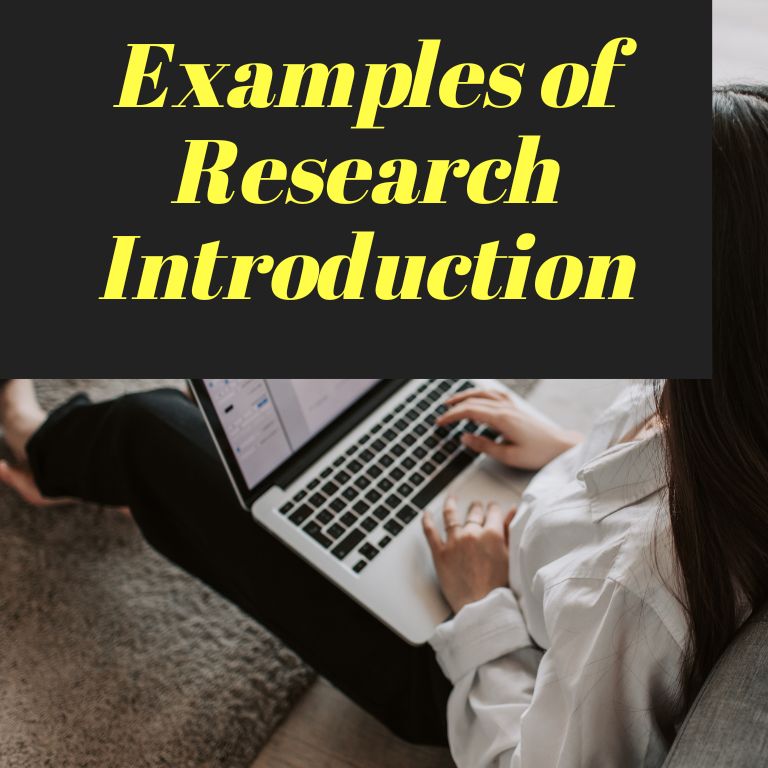Introduction:
In academic writing, the introduction serves as the gateway to your research, setting the tone and context for the study that follows. It is crucial for capturing the reader’s attention and providing a roadmap for what to expect. This article focuses on research introduction samples/examples that illustrate effective writing strategies. From understanding the essential components of a research introduction to exploring qualitative and quantitative examples, this guide aims to equip researchers with the tools they need for crafting compelling introductions.

Understanding Research Introductions
A research introduction is the first section of a research paper or thesis that outlines the context and rationale for the study. Its importance cannot be overstated, as it establishes the foundation upon which the research is built. A well-crafted introduction not only piques the reader’s interest but also lays out the objectives and significance of the study.
Components of a Research Introduction
- Background Information: Providing context about the research topic is essential. This section helps readers understand the larger framework within which your study is situated.
- Research Problem Statement: Clearly articulating the problem that your research addresses is crucial. It defines the scope and focus of your study.
- Purpose of the Study: This section explains the primary aim of your research, outlining what you hope to achieve.
- Research Questions/Hypotheses: Including specific research questions or hypotheses guides the direction of your study and clarifies the anticipated outcomes.
Examples/Samples of Research Introduction:
Qualitative Research Introduction Example
Qualitative research focuses on understanding human behavior and the reasons that govern such behavior. For instance, an introduction in a qualitative study might read:
“This study explores the experiences of first-generation college students navigating academic life. With the increasing number of first-generation students in higher education, understanding their unique challenges is essential to fostering supportive learning environments. This research aims to identify common themes in their experiences, which can inform future support strategies.”
Quantitative Research Introduction Sample
Quantitative research, on the other hand, emphasizes quantifying data and statistical analysis. An introduction in a quantitative study could look like this:
“The prevalence of mental health issues among adolescents has become a critical public health concern. This study investigates the relationship between social media usage and anxiety levels among high school students in Uyo. By analyzing survey data from 500 students, this research aims to uncover patterns that may inform intervention strategies.”
Research Paper Introduction Example in APA Format
Following the APA format is essential in academic writing, particularly in psychology and social sciences. Here’s an example of a well-structured introduction in APA format:
“In recent years, the impact of sleep on academic performance has garnered significant attention (Smith, 2022). This study examines the correlation between sleep duration and academic success among university students. Given the increasing demands on students’ time, understanding this relationship is vital for promoting effective study habits and overall well-being.”
Utilizing MyWordAi for Research Writing
To streamline the research writing process, researchers can benefit significantly from using MyWordAi. This automated academic writer, powered by advanced AI technology, simplifies the research writing process, allowing users to focus on their research rather than the intricacies of writing.
Step-by-Step Guide on Using MyWordAi
- Visit MyWordAi: Go to MyWordAi.com to access the platform.
- Sign Up/Login: Create an account or log in if you already have one.
- Select Your Project: Choose the type of document you want to create, such as a research paper introduction.
- Input Your Topic: Enter the details of your research topic, including keywords and specific requirements.
- Choose a Writing Style: Select your preferred writing style, whether qualitative, quantitative, or APA format.
- Generate Content: Use the AI-powered tool to generate your introduction. MyWordAi will provide tailored content based on your specifications.
- Edit and Refine: Review the generated text, making any necessary edits or adjustments to fit your voice.
- Download and Save: Once satisfied, download your document and save it for future use.
With MyWordAi, researchers can easily generate well-structured research introductions without needing to learn AI prompting. This tool is designed to assist in enhancing the quality of academic writing, making it an invaluable resource for students and professionals alike.
Conclusion:
Crafting a compelling research introduction is a skill that significantly impacts the success of your research. By understanding its components and utilizing tools like MyWordAi, researchers can enhance their writing process and produce high-quality academic work. For those looking to simplify their writing experience, consider using MyWordAi, the automated academic writer that takes the hassle out of research writing.
To get started, download the MyWordAi app here: MyWordAi on Google Play.